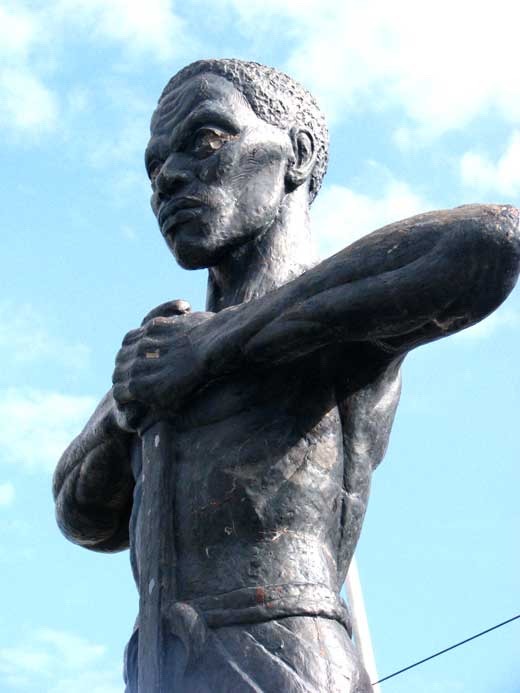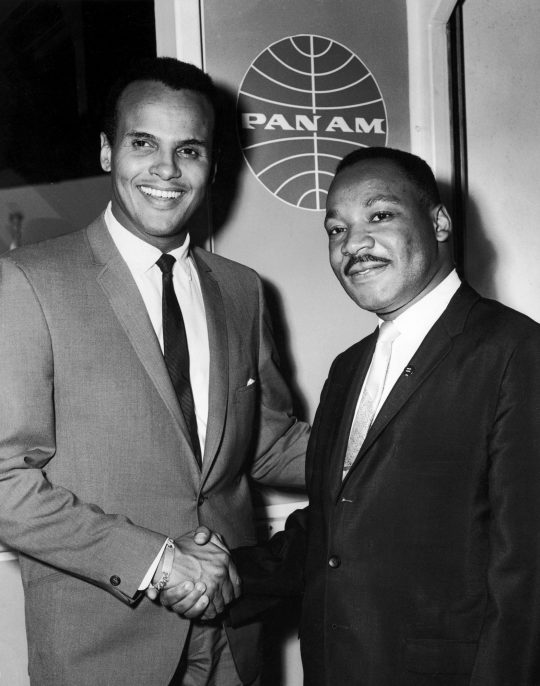#jamaican culture
Explore tagged Tumblr posts
Text

#bob marley#bob marley & the wailers#haile selassie#blackisbeautiful#blackmen#black activism#blackbeauty#blackmenkillingit#blacktivism#blackmusic#blackculture#jamaica#jamaican culture#rasta#rastaman vibration#reggae#rocksteady#reggae roots#locs#afrocentrichairstyles#afrocentric aesthetic#afrocentrism#panfricanism#for the culture#blackandproud#black consciousness#blackisavibe#blackpower#blacktumblr
950 notes
·
View notes
Text
youtube
Schools in France Vs Schools In Jamaica
#cultureshock#jamaican culture#french culture#schoollife#school#youtuber#youtube#influenceur#youtubeur#influencer#romonwrites#content creator#Youtube
9 notes
·
View notes
Text
youtube
0 notes
Text
Exploring Jamaican Patois, Also Known as Patwa, Through the Lens of Real Estate, History, and Culture: A New Resource at Jamaica Homes
Jamaican Patois, or Patwa, is a dynamic and evolving language that tells the story of Jamaica’s past, shapes its present, and inspires its future. Rooted in history, deeply embedded in culture, and influential in politics, Patwa transcends its role as a means of communication to become a symbol of resilience, creativity, and identity. Now, Jamaica Homes is proud to present a new resource that…
#Jamaican Culture#Jamaican heritage#Jamaican History#Jamaican Patois#language and identity#Patwa#real estate in Jamaica
0 notes
Text
Jamaica: The Soulful Pulse of Global Influence
Jamaica, with its vibrant culture and rich history, has undeniably left an indelible mark on the global landscape through its music, art, and spiritual heritage. At the heart of Jamaica’s influence lies the timeless rhythms of reggae, the spiritual ethos of Rastafari, and the iconic legacy of Bob Marley. As we delve into the depths of Jamaica’s cultural tapestry, we uncover a profound connection…

View On WordPress
#Bob Marley#Don G#Haile Selassie I#iKON#Jamaican Culture#Jamaican History#Jamaican Music#Lion of Judah#Majestic Lion#One Love#Season One
0 notes
Text
Patra - Romantic Call ft. Yo-Yo 🇯🇲x🇺🇲
#black tumblr#pretty#black#black women#luxury#music#black girl#fashion#tumblr#black beauty#black culture#jamaica 🇯🇲#jamaica#dancehall#jamaican#reggae#hip hop#rap#rapper#culture#90s#90s aesthetic#90s fashion#90s nostalgia#90s music#african diaspora#tupac shakur#tupac#rip tupac#2pac
589 notes
·
View notes
Text
Another reason i hate 'Hobie is older brother-coded' in addition to the pedojacketing it's spawned is it's depoliticalizing Hobie's character into a very much whitewashed white punk trope.Hobie took in Gwen and had Miles' back not because he's an older brother figure to anybody except maybe Mayday but because he's an activist and intersectionalist and you can't remove that aspect without blandeing Hobie's punkness.Hobie is punk not as an aesthetic,not as sex appeal(mainly since he's,y'know,a minor),but as a culture and political stance.He's not the stereorype,he's an ACTUAL punk i.e a black freedom fighter with hardcore tastes in music and everything else but open softness he's not ashamed of as he choose punk to spread kindness and stand out as himself,not to emulate white people.He's not Duncan from Total Drama or a white femcel who listens to Avril Lavigne,he's Hobie 'Spiderpunk' Brown and he didn't reference multiple historical anti-govermental slogans and have his blue laces on display and a playlist stacked exclusively with legit punk bands just for you to reduce him down to a problematic and lowkey sexist specifically to begin with archetype
#hobie brown#hobie brown deserves better#transmasc hobie brown#unlabeled hobie brown#autistic hobie brown#hobie is jamaican#hobie is ugandan#team dad hobie#seapunk lover hobie#mama's boy hobie#ace hobie#gwen stacy#miles morales#ghostpunk#punkflower#ghostpunkflower#t4t ghostpunkflower#black gwen stacy#trans gwen stacy#atsv#spiderman#pastel punk tag#punk#punk culture#afropunk#solarpunk#gentrification#💌#summerposting
186 notes
·
View notes
Text

Rastafari man, Jamaica, by Mattstone911
#jamaican#jamaica#carribean#america#folk clothing#traditional clothing#traditional fashion#cultural clothing
223 notes
·
View notes
Text


Paul Bogle led the last large scale armed Jamaican rebellion for voting rights and an end to legal discrimination and economic oppression against African Jamaicans.
Bogle owned a home in Stony Gut and had another house in Spring Garden as well as a 500 acre farm at Dunrobin making him one of the few African Jamaicans prosperous enough to pay the fee to vote.
Officially Jamaican slavery ended in 1833 after the Sam Sharpe Rebellion a year earlier. Yet from 1834 to 1838 former slaves served post-servitude “apprenticeships” to their former owners. They were also subject to a judicial system controlled by the Colonial government primarily for the benefit of the former slaveholders. They endured unemployment and taxes but low wages.
In August of 1865, Bogle led a 50 mile march of small farmers and former slaves to Spanish Town to meet with Governor Eyre to discuss their political grievances. They were denied an audience with the governor.
Two months after that attempted meeting, the Morant Bay Rebellion started, sparked by the arrest of a supporter of Bogle for protesting the conviction of another black Jamaican for trespassing on a long-abandoned plantation.
The Jamaicans, armed with sticks and stones, were protesting against injustice and widespread poverty. Most freedmen were prevented from voting by high poll taxes, and their living conditions had worsened following crop damage by floods, cholera and smallpox epidemics, and a long drought.
Bogle was captured, tried and convicted by the colonial government, and hanged on 24 October 1865 in the Morant Bay court house.
Because of his efforts Bogle was recognized as a national hero in Jamaica in 1969.
•••
Paul Bogle dirigió la última rebelión armada jamaiquina. Esta fue por el derecho al voto, el fin a la discriminación legal y la opresión económica contra los jamaiquinos africanos.
Bogle solía ser dueño de una casa en Stony Gut y tenía otra casa en Spring Garden, también una granja de quinientos acres en Dunrobin, lo que lo convertía en uno de los pocos jamaiquinos africanos lo suficientemente prósperos como para pagar la tarifa para votar.
La esclavitud en Jamaica terminó oficialmente en 1833 después de la rebelión de Sam Sharpe. Sin embargo, de 1834 a 1838, después de la servidumbre, los antiguos esclavos se convirtieron en “aprendices” de sus antiguos dueños. También estaban sujetos a un sistema judicial controlado por el gobierno colonial, el cual principalmente beneficiaba a los antiguos propietarios de esclavos. Sufrieron desempleo e impuestos.
En agosto de 1865, Bogle encabezó una marcha de cincuenta millas, tanto pequeños agricultores como ex esclavos fueron hasta Spanish Town para reunirse con el gobernador Eyre y discutir sobre las quejas políticas. Se les negó una audiencia con el gobernador.
Dos meses después de ese intento de reunión, comenzó la Rebelión de Morant Bay, provocada por el arresto de un partidario de Bogle, el cual se encontraba protestando en contra de la condena que se le había aplicado a otro jamaiquino negro por entrar ilegalmente a una plantación que había sido abandonada hace mucho tiempo.
Los jamaiquinos armados con palos y piedras, protestaron en contra de la injusticia y la pobreza generalizada. A la mayoría de las personas negras libres se les impidió votar debido a los elevados impuestos electorales, y sus condiciones de vida habían empeorado tras los daños a las cosechas causados por inundaciones, epidemias de cólera y viruela, y una larga sequía.
Bogle fue capturado, juzgado y condenado por el gobierno colonial y ahorcado el 24 de octubre de 1865 en el juzgado de Morant Bay.
Gracias a sus esfuerzos, Bogle fue reconocido como héroe nacional de Jamaica en 1969.
#jamaica#black history is everybody's history#history#freedom#freedom fighters#black history is world history#afrocentric#blackhistory#español#historyfacts#historia africana#historia#jamaican#hero#national hero#blacklivesalwaysmatter#blacklivesmatter#blackhistorymonth#blackpeoplematter#knowyourhistory#heritage#voting rights#human rights#civil rights#culture#black history month#blackhistoryyear#black history is american history#black history#black power
62 notes
·
View notes
Text
#bob marley & the wailers#war#rastaman vibration#haile selassie#bobmarley#blackisbeautiful#blackmen#black activism#blackbeauty#blackmenkillingit#blacktivism#blackmusic#blackculture#jamaica#jamaican culture#rasta#reggae#rocksteady#reggae roots#locs#afrocentrichairstyles#afrocentric aesthetic#afrocentrism#panfricanism#for the culture#blackandproud#blackisavibe#blackpower#blacktumblr
770 notes
·
View notes
Text
youtube
Jamaican Proverbs and Sayings
#youtuber#youtube#youtubeur#influenceur#influencer#romonwrites#content creator#jamaican culture#jamaican patois#jamaica#jamaican#Youtube
1 note
·
View note
Text
I’ve noticed that black people who’ve never spent an extended amount of time in the south or interacted meaningfully with southern black people can never understand why swaths of us won’t leave that region …the depth of black American history and culture in states people think are just full of white hicks is incredible
#tiny museums dedicated to distinct diasporic cultures staffed by one grandpa#churches that have been standing since the 1800s#family’s who still live next to the first plot of land their ancestors owned#a Jamaican from New York not finna get it most of the time lmaooo
49 notes
·
View notes
Text
youtube
#jamaican culture#jamaica news#jamaica news today#jamaica entertainment#jamaican#jamaica#sizzla#jamaica love#sizzla stands with haiti#Youtube
0 notes
Text
Exploring Jamaica Through the Lens of Real Estate, History, and Culture: A New Resource at Jamaica Homes
Jamaica, an island brimming with vibrant culture, rich history, and diverse landscapes, has long been a dream destination for property seekers, travelers, and historians alike. Whether you’re considering buying a home, exploring investment opportunities, or simply curious about the island’s deep roots, Jamaica Homes has launched a powerful new resource that brings all of this together—combining…
0 notes
Text









90’s Dancehall Fashion
Location: Jamaica 🇯🇲
#dancehall#jamaica#jamaican#carribean#caribbean culture#islandtings#Jamaicanculture#90s asthetic#90s fashion#dance#dancehall queen#black tumblr#black moodboard#melanin#caribbean travel#carribbeantumblr
90 notes
·
View notes
Video
tumblr



March 1st, 1927 - April 25, 2023
RIP to the great Harry Belafonte.
What a life.
Daylight come and me wan’ go home.
#Harry Belafonte#RIP#Black Culture#Civil Rights#MLK#Jamaican#Heart Failure#Banana Boat#Day-O#Music#Pioneer#Video#Inspiration#Activist
756 notes
·
View notes